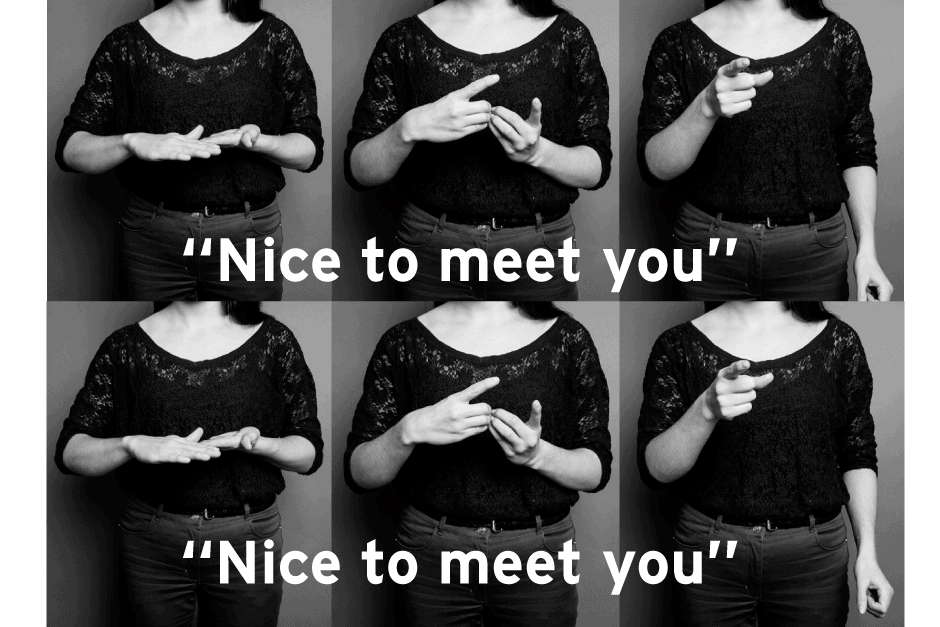For as long as there have been people there has been sign language, in some combination of hand shapes, body movements, and facial expressions.
One of the earliest references in sign language in literary history is found in Plato’s Cratylus, when Socrates declares, “If we hadn’t a voice or a tongue, and wanted to express things to one another, wouldn’t we try to make signs by moving our hands, head, and the rest of our body, just as dumb people do at present?”
A strongly held misconception about sign language is that it is somehow reliant on the principles of spoken language, and is simply a translation of spoken word into gestures.
In reality, the only element of sign languages that is influenced by spoken languages is the manual alphabet. Not considered a true component of sign language, the spoken alphabet can be finger-spelt to spell out proper names.
Sign languages have developed almost entirely independent of spoken languages. This is most clearly seen in the United States, Canada, the United Kingdom, Australia, and New Zealand, which share English as their dominent spoken language. However, American Sign Language (asl), used in the US and Canada, is almost unintelligible to those who know British Sign Language, used in the other three countries. The grammatical structure of asl has more in common with spoken Japanese than it does with English.
When you find yourself on a night out and can’t make yourself heard over the loud music or noisy patrons why not try communicating with sign language instead?


